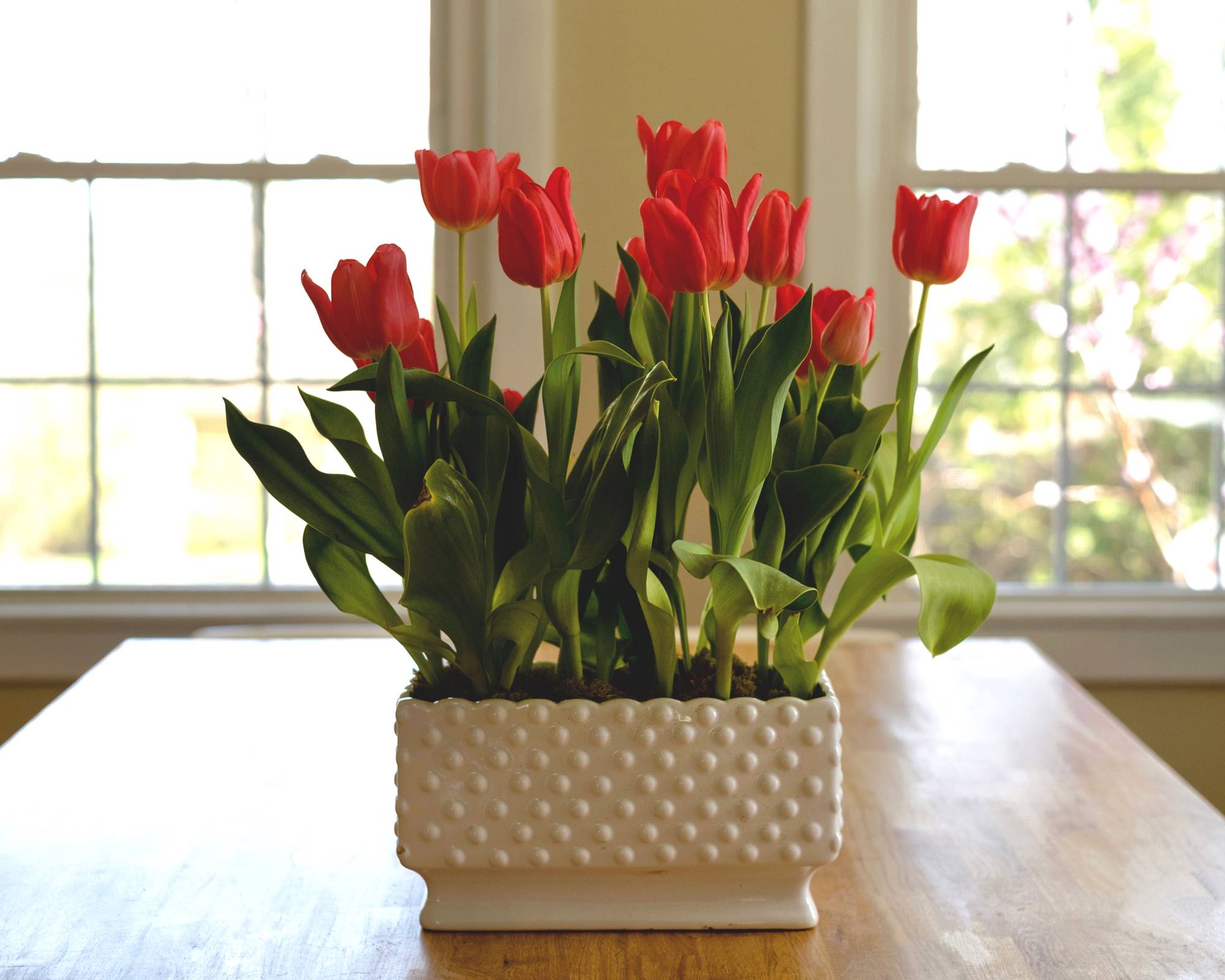Guide to Forcing Tulip Bulbs Indoors for Spring Beauty in the Dead of Winter
Forcing tulips bulbs indoors is a great way to bring some brightness and life into you home in the winter months. Learn how to effectively force tulip bulbs.


Amy Draiss
Forcing tulip bulbs indoors is a great way to bring some spring cheer into your home during the cold, dark winter months. Tulips remain among the most popular plants for the early-season landscape. Their beauty, color, and hardy nature makes them among the best choices as a means to establish carefree spring beds.
Those hoping to extend their beauty, by growing tulip bulbs indoors through winter, have also found immense success in forcing. This guide serves to take a closer look at the process of forcing tulip bulbs.
Let's dig right into it so you can get your tulip bulbs going now for delightful blooms through the winter.
Forcing Tulip Bulbs

Forcing flower bulbs refers to the process of “tricking” plants into bloom when outdoor conditions are otherwise inhospitable. Tulips, which bloom naturally in spring, are generally forced through winter. Understanding how to do so, however, will require some thought and attention from growers.
Tulips are considered true bulbs. This means that the flowers of each are already held within the bulb, ready to grow and eventually bloom at the appropriate time. Several factors will serve to signal that bulbs should begin to grow. Most important among these, in the case of tulips, will be prolonged exposure to conditions that are cool. It isn't until this treatment has occurred that the forcing process can begin.
Cold treatment occurs naturally in bulbs positioned into outdoor beds. Those hoping to mimic these conditions indoors can chill flowering bulbs in a variety of ways. Pre-chilled bulbs can often be purchased directly from reputable dealers, ready for planting upon purchase. More experienced gardeners often make use of refrigeration to ensure that the needs of the bulbs have been met. During this time, care should be used to avoid any exposure to ethylene gas, which may result in a failure to bloom. Bulbs of most tulip varieties should be chilled at least 12-16 weeks before planting.
Those forcing tulips for the first time will have a few options in terms of planting. Once chilled, bulbs can be potted directly into containers, making use of a well-draining potting mix like this MiracleGro mix from Lowe's. This ceramic low bowl planter from Lowe's is a great modern option for your indoor tulip bulbs.
Sign up for the Gardening Know How newsletter today and receive a free copy of our e-book "How to Grow Delicious Tomatoes".
Bulbs can be arranged closely, positioned so that their growth tip faces up. New plantings should be covered with soil and watered well. Pots and containers can then be moved to a cool, dark place, helping to encourage root development over the course of the next 1-2 weeks. After this period, potted containers can finally be warmed to room temperature, and positioned so that they are able to receive bright, indirect light.
Many choose to force tulips in water. This is done through the use of specialized bulb vases or pebbles arranged in a way so as to properly situate the bulbs at planting. Each bulb sits at the top of the vase, with gardeners making certain that only the plant's roots come into contact with the water. You can find this gorgeous handmade blown glass bulb vase from East Fork.
Indoor Tulip Care

Those forcing tulips indoors often find that their care is only minimal. Still, growers will need to ensure that conditions remain optimal for growth. In the case of those in pots and containers, routine watering will be needed, so as to prevent the soil from drying completely. This 4-in-1 soil moisture meter from Amazon takes the guesswork out of watering.
Tulip bulbs grown in forcing vases may also require additional water, should too much evaporate over time. Consistent monitoring may also be needed, with gardeners taking special note of any changes in the plants’ appearance. Most choose to discard plants after bloom, as bulbs grown indoors are unlikely to rebloom.
So get working now to enjoy tulip bulbs indoors this winter and add some special cheer to your home! Seeing those happy blooms is sure to get you through the dark winter months.

Tonya Barnett has been gardening for 13 years. Flowers are her passion. She has transformed her backyard into a cut flower garden, which she regularly chronicles on her YouTube channel http://www.youtube.com/@tonyawiththeflowers.
- Amy DraissDigital Community Manager